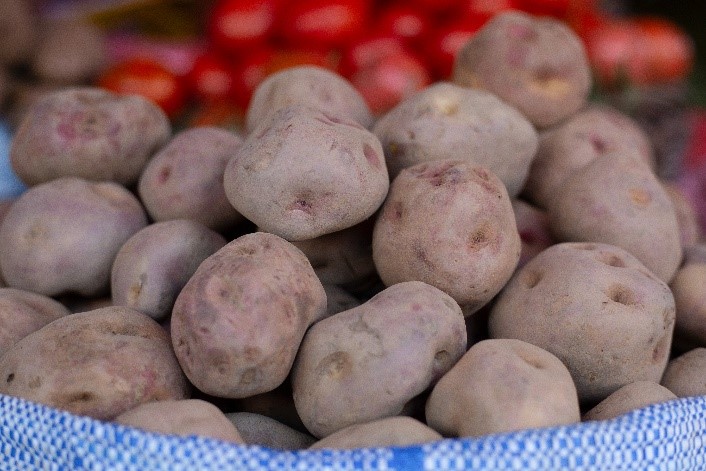A world without potato chips? Come on!

When we protect plants,
we protect lives.
#PlantHealthDay
Potato (Solanum tuberosum L.) originated in the South American Andes region over 8 000 years ago, spread to Europe in the 16th century, and today, is produced in 159 countries and consumed by billions of people worldwide. Potato has a rich genetic diversity and can be found in more than 5 000 varieties.
Major pests/pathogens:
- Late blight
- Bacterial wilt
- Colorado potato beetle
- click beetles
- Potato tuber moth
Economic value:
- Potato starch is used as an adhesive, binder, texture agent or filler in pharmaceutical, textile, wood, and paper industries and as a 100 percent biodegradable substitute for polystyrene and other plastics.
- In 2023, global trade of potatoes reached USD 6.55B, an increase of 20.8 percent from 2022.
- Top exporters: the Netherlands, France, Germany, Canada, Egypt.
- Top importers: Belgium, Spain.
Cultural value:
- Potato cultivation produces lower greenhouse gas emissions compared to other major crops, which makes it an environmentally valuable crop.
- Potatoes are a staple crop for millions of people in many regions globally, providing food security and economic benefits through jobs and trade.
- In 2023, 383 million tonnes of potato were produced, the highest of all root and tuber crops.
- Potato peels provide a low-cost alternative for making bioethanol.
Fun facts:
- 30 May is International Day of Potato, a worldwide observance of the importance of potato in combating hunger and poverty.
- In 1995, potatoes became the first vegetable to be grown in space, selected due to their hardiness, adaptability to various environmental conditions and high nutritional value (source)
- Not all potatoes are yellow or brown. Some are purple, red, or blue and are rich in antioxidants.
- During the Alaskan Klondike gold rush (1897-1898), miners valued potatoes so highly for their vitamin C content that they traded their gold for potatoes (source).
Why does protecting plants and crops matter?
Plant pests destroy up to 40 percent of global crops annually. Protecting plants can help:
- Achieve a zero-hunger world
- Reduce poverty and inequality
- Protect biodiversity
- Support livelihoods of rural farmers
- Sustain economies around the world

